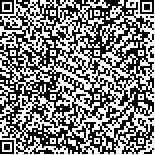| 摘要: |
| [摘要] 目的 探讨腹针联合常规吞咽康复训练治疗脑卒中后吞咽障碍的临床疗效。方法 选择2020年9月至2021年12月广西中医药大学附属瑞康医院收治的脑卒中后吞咽障碍患者60例,采用随机数字表法将其分为观察组和对照组,每组30例。对照组接受常规吞咽康复训练;观察组在对照组治疗方案的基础上加用腹针治疗,两组疗程均为4周。比较两组治疗前后视频吞咽造影检查(VFSS)评分、舌骨喉复合体移动度、咽腔收缩率(PCR)、上食管括约肌(UES)开放度以及临床疗效。结果 两组治疗后的VFSS评分均较治疗前提高,且观察组较对照组更高,差异有统计学意义(P<0.05)。两组治疗后舌骨喉复合体移动幅度(舌骨向上移动、向前移动及甲状软骨向上移动、向前移动)均较治疗前提高(P<0.05),且观察组变化更显著,差异有统计学意义(P<0.05)。两组治疗后的UES开放度较治疗前增大,PCR较治疗前下降,且观察组变化较对照组更加显著,差异有统计学意义(P<0.05)。观察组的总有效率高于对照组,差异有统计学意义(96.67% vs 70.00%; χ2=7.680,P=0.006)。结论 腹针联合常规吞咽康复训练可有效治疗脑卒中后吞咽功能障碍,促进患者吞咽功能康复。 |
| 关键词: 腹针 脑卒中后吞咽障碍 康复 临床疗效 |
| DOI:10.3969/j.issn.1674-3806.2022.09.15 |
| 分类号:R 245 |
| 基金项目:广西壮族自治区中医药管理局自筹经费科研课题(编号:GZZC2020124);中华预防医学会科研资金支持项目(编号:20190222) |
|
| An exploration on the clinical efficacy of abdominal needle combined with routine swallowing rehabilitation training in treatment of post-stroke swallowing disorder |
|
JIN Xin, SHAO Tian-xiang, LIU Hai-lan, et al.
|
|
Department of Rehabilitation Medicine, Ruikang Hospital Affiliated to Guangxi University of Chinese Medicine, Nanning 530011, China
|
| Abstract: |
| [Abstract] Objective To explore the clinical efficacy of abdominal needle combined with routine swallowing rehabilitation training in treatment of post-stroke swallowing disorder. Methods Sixty patients with post-stroke swallowing disorder who were admitted to Ruikang Hospital Affiliated to Guangxi University of Chinese Medicine from September 2020 to December 2021 were selected and divided into an observation group and a control group by random number table method, with 30 cases in each group. The control group received routine swallowing rehabilitation training, and the observation group received abdominal needle treatment based on the treatment plan of the control group, and the course of treatment in both groups was 4 weeks. The videofluoroscopic swallowing study(VFSS) score, mobility of the hyoid laryngeal complex, pharyngeal constriction ratio(PCR), and opening degree of upper esophageal sphincter(UES) and clinical efficacy were compared between the two groups before and after treatment. Results The VFSS scores in the two groups were improved after treatment compared with those before treatment, and the VFSS scores of the observation group were higher than those of the control group, and the differences were statistically significant(P<0.05). The movement ranges of hyoid laryngeal complex(upward movement and forward movement of hyoid bone, and upward movement and forward movement of thyroid cartilage) after treatment in both groups were increased compared with those before treatment(P<0.05), and the changes in the observation group were more significant, and the differences were statistically significant(P<0.05). After treatment, the opening degrees of UES in the two groups were increased compared with those before treatment, and the levels of PCR in the two groups were decreased compared with those before treatment, and the changes in the observation group were more significant than those in the control group, and the differences were statistically significant(P<0.05). The total effective rate of the observation group was higher than that of the control group, and the difference was statistically significant(96.67% vs 70.00%; χ2=7.680, P=0.006). Conclusion Abdominal needle combined with routine swallowing rehabilitation training can effectively treat post-stroke swallowing disorder and promote the recovery of the patients′ swallowing function. |
| Key words: Abdominal needle Post-stroke swallowing disorder Rehabilitation Clinical efficacy |

